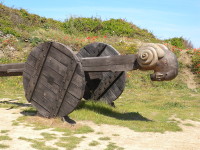
Are you tired of dealing 20 damage to your Cleric opponent only to see them heal up to full health on their next turn? Do you look at an opposing champion wall and wonder how you’re supposed to get through it again? Then this article may be for you. We will discuss ways of countering the Cleric’s unique and powerful playstyle, and which pitfalls to avoid when facing off against a Cleric.
This is an advanced guide that is catered to more experienced players that know most of the cards and upgrades and have established a solid understanding of all levels of play (for an intro to the Cleric, go here). The guide is written mostly from a perspective of level 12 play, but its principles are just as true for the lower levels.
Part 1: Know your Cleric and general advice
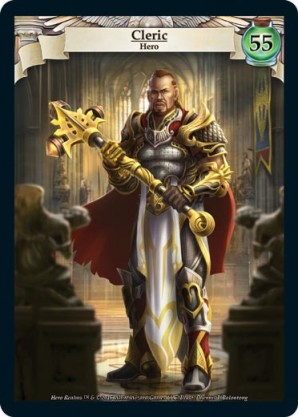
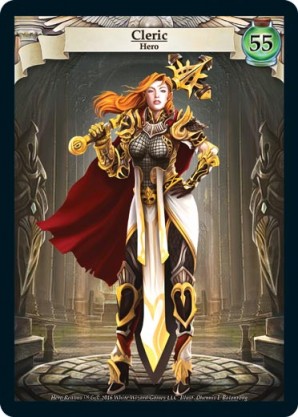
The Cleric revolves around healing and buffing their champions and the way they are built will allow them to focus more on the one or the other or take a middle-of-the-road type of approach. To find out more about how a Cleric plays and different sample builds, check out DaKatSesMeow’s excellent Cleric articles here and here.
Cleric is one of the harder classes to learn and master in Hero Realms (along with the Wizard). If the Cleric is piloted tightly, it’s mostly matchup-neutral and therefore considered a stronger class or at least middle of the pack. A game against a Cleric is always at risk of spiraling out of control, putting you in a position where a win is out of reach. Your goal must be to keep the Cleric from gaining momentum and prevent this snowballing from happening.
Despite Cleric being a strong class, it has its weaknesses. While the economy is quite good since the mace buff and since people have learnt to employ resurrect abilities to keep their followers out of the reshuffle, the cleric typically starts off rather low on damage and is usually not incentivized to go after high damage numbers when prioritizing their early market buys. This can give you an edge when putting your own champion wall up ahead of them. Adding to that, the Cleric is the second most predictable class in the game right now after Fighter. Their game plan is pretty clear and straightforward, with less room for flexibility than other classes offer. This can be exploited in a number of ways that I will lay out in more detail further below.
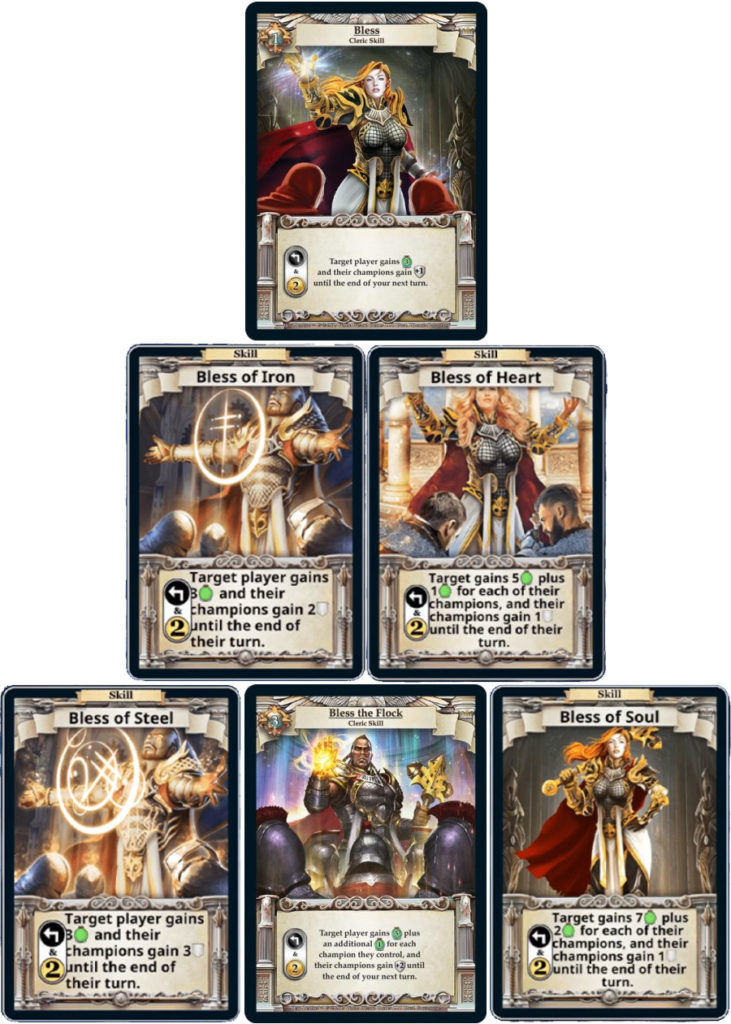
The choice of the Skill “Bless” (Steel/Flock/Soul) is what mostly differentiates their builds and determines which other upgrade choices are most synergistic with the chosen Bless. It also determines how champion dependent the Cleric’s game will be, with Bless of Steel being very dependent on champions to Bless of Soul very much less so.
Don’t let a Cleric running Bless the Flock or Bless of Soul catch you off guard with an action and damage heavy strategy. Their inbuilt sustain can allow them to finish a damage race before you do quite easily if the market provides the cards for it.
When facing the Ruinos Redeemed and/or Phoenix Helm upgrade cards, think about whether you really want to stun their champions if it’s going to give them the extra draw. Often, it’s better to just use the “End Turn” button in the menu, especially early game. Don’t be afraid to waste significant amounts of damage doing this early as they will probably just heal up again above the armor threshold if needed. Building up your own deck and denying good purchases to the Cleric is much more important than dealing a little damage and taking out some followers in the early game. If you can be sure that they won’t be able to heal back up over the armor threshold, it’s of course a very good thing to deactivate that armor and you should do so by all means. Just be sure to do the math first and factor in all the ways they can heal back up. For example, a “Flock Cleric” with Prayer Beads and the Everburning Candle will often be able to heal for 15 or more points of health, without any Imperial cards or the healing from Divine Resurrect. With the Ruinos, keep an eye out for situations where stunning it forces a reshuffle on their turn, effectively bottom decking their current hand. This is especially good if they have some high value actions in hand. See Darklighter’s article on more intricacies of the Reshuffle here.
The most important piece of advice though, if you want to become better at playing against the Cleric, is to play some games as the Cleric. It will allow you to understand what a Cleric wants to do to find success and what it wants or doesn’t want their opponent to do. The knowledge you find by doing that can then be applied when facing one of these holy warriors in battle.
Part 2: The Rules

In this section I will provide several rules of descending importance to follow when facing off against a Cleric. As everything in Hero Realms, these are somewhat situational and you will probably always find an exception to a rule, where the correct play is to do something else (maybe with the exception of rule 1). But following these will greatly improve your success rate against Clerics overall and as you get more experienced with the matchup you will know when deviating from The Rules is the right call.
Rule No. 1:
- Deny sacrifice!
This rule is most important early but may stay relevant for most of the game depending on the game pace. When playing for the long game, the player that gets a sacrifice advantage is usually favored to win. There are ways to mitigate when falling behind in this area but it’s hard. Sacrifice is the most important mechanic for a Cleric deck to come online.
On turn 1 against a Cleric with 2 Gold in my hand and a Death Touch on the row with nothing else for 1 Gold, I will buy the Death Touch and waste a Gold 100% of the time. There is no exception to this. Tell me I’m wrong.
Rule No. 2:
- Get your own champion wall up
Ideally you want to do this before the Cleric gets their wall up and running. As outlined above, the Cleric starts off low on damage and is not incentivized to buy damage early so this is a great way of forcing them to deviate from their preferred game plan and do just that.
Rules No. 3, 4 and 5 are dependent on the pace of the game and the matchup:
- Buy enough damage to handle problematic champs, especially those that provide economy and sacrifice early
This will prevent the snowball from happening. Stun effects from Guild cards can also come in very handy here, especially if the cleric employs Bless of Steel and Brightstar Shield.
- If going long (mostly Thief/Mirror), try to get an economy advantage early and pivot into discard effects as well as draw and cycle in the mid game
In a match where both players have even access to sacrifice, discard will often be the kicker that swings a game in one direction. Against a thinned down deck every discard is providing a lot of value. Your goal is to build a deck that can win a war of attrition and maybe even go into fatigue. It’s important to be picky about your buys so you don’t clog up your deck for the late game.
- If going for a mid-range win (mostly Ranger/Wizard) prioritize draw and cycle
Your goal is to build a combo deck that can burst the cleric down in about two turns with huge damage output.
Rule No. 6:
- If you’re playing as Fighter, hope you brought the right build, play your best and pray to the RNGesus
This is still arguably the worst matchup in the game. It’s not impossible to win as a Fighter but you need a lot of things to go your way. You want sacrifice, healing, economy, and damage to come together just right. Buying up champions before the Cleric gets them can give you an edge. Don’t be discouraged if this feels hopeless. Just try to have fun and move on.
Situational rule:
- Buy some Imperial if needed
Depending on what your build offers you may need to incorporate a little sustain into your buys to be able to go long with the Cleric. A Thief with Lift will probably not need to do so while a Thief with Misdirection will. A Fighter pretty much always needs to buy some healing to stay alive long enough for their damage to come together.
Part 3: Matchups and build specifics
1. Fighter (heavily disadvantaged)
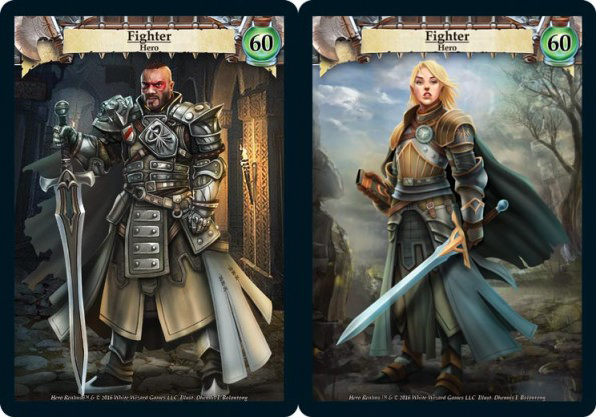
See rule No. 6. Try to beat them at the long game despite being worse at it. Don’t try to burst them down. Just don’t. It won’t work.
Useful upgrades for the matchup include Knockdown, Whirling Blow, Helm of Fury, Seasoned Shield Bearer, Hand Scythe and Double-Bladed Axe.
2. Ranger (slightly advantaged)


The Ranger is arguably the strongest class in the game right now, mostly because it has no bad matchups. There is neither a special build nor special tactics needed when playing as the Ranger vs the Cleric. Just follow the rules to deny the Cleric momentum while building your own and burst them down when the time has come. Just try not to waste Snapshot. If you’re actually running off meta upgrades like Longshot or even Triple Shot or the Snake Pet, your chances of winning only go up.
3. Thief (advantaged)

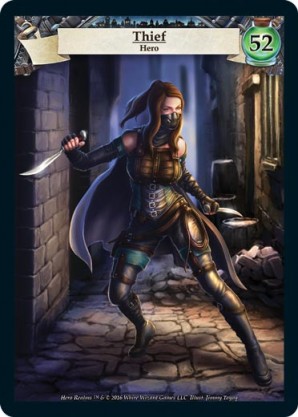
Lean into the long game, getting sacrifice and discard. Leverage your economic starting advantage. Don’t panic if your health gets low as long as you’ve got some sustain of your own. With enough patience it’s very possible to turn a game around from a seemingly lost position. The standard builds work just fine, with off meta upgrades like Enchanted Garrote, Sacrificial Dagger and Misdirection providing even more value against a Cleric.
4. Wizard (slightly advantaged)

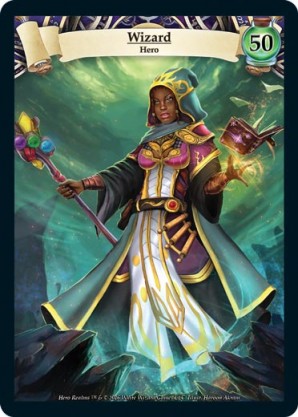
Time your Fireball well, preferably not using it until the Cleric has used their resurrect. Similar to the Ranger, follow the rules to deny the Cleric momentum while building your own and burst them down when the time has come. Pretty much all builds work well though. Explosive Fireball can provide insane value vs a Cleric with the AoE, the discard and the market lock. Silverskull Amulet is very helpful for not falling behind economically. Serpentine Staff deserves a special mention as it is kind of built to destroy Clerics but can be risky against Ruinos Redeemed and Phoenix Helm, providing the Cleric with extra buying power early and enabling them to gain momentum. Therefore, it is most effective when paired with the Runic Robes to give you control over when to use its effect.
5. Cleric mirror

Sacrifice and draw are what decide these games usually, with discard being the kicker if the decks are matched evenly otherwise. Early buys off the market can often decide the game even if this only shows many turns later. Be efficient with your buys, don’t buy anything you don’t want in your deck in the late game, especially Imperial cards if they don’t provide you with additional value like draw. The different builds each have their own unique strengths in the mirror as the bigger buff to champions from Bless of Steel makes it easier to keep that champion wall up and running, while Bless of Souls offers the highest flexibility for how to build your deck and might even enable an action oriented aggro approach. Which ability one has will also play a big role in how the mirror plays out. With Mass Resurrect it will usually be best to patiently wait for the right moment to combine some champions your opponent stunned the previous turn with some that you’ve drawn to create a huge wall to get through. With Divine Resurrect on the other hand it can be a good tactic to burn it early for the draw securing a clutch early game buy, like a card that offers the ability to sacrifice.
Conclusion
The Cleric is a powerful opponent, but it can be beaten with patience and a solid game plan. Never be afraid when facing a Cleric but always be wary of their ability to put the game out of reach for you. Strap in for the long game and remember:
The best way to break the wall is to not have it built in the first place.